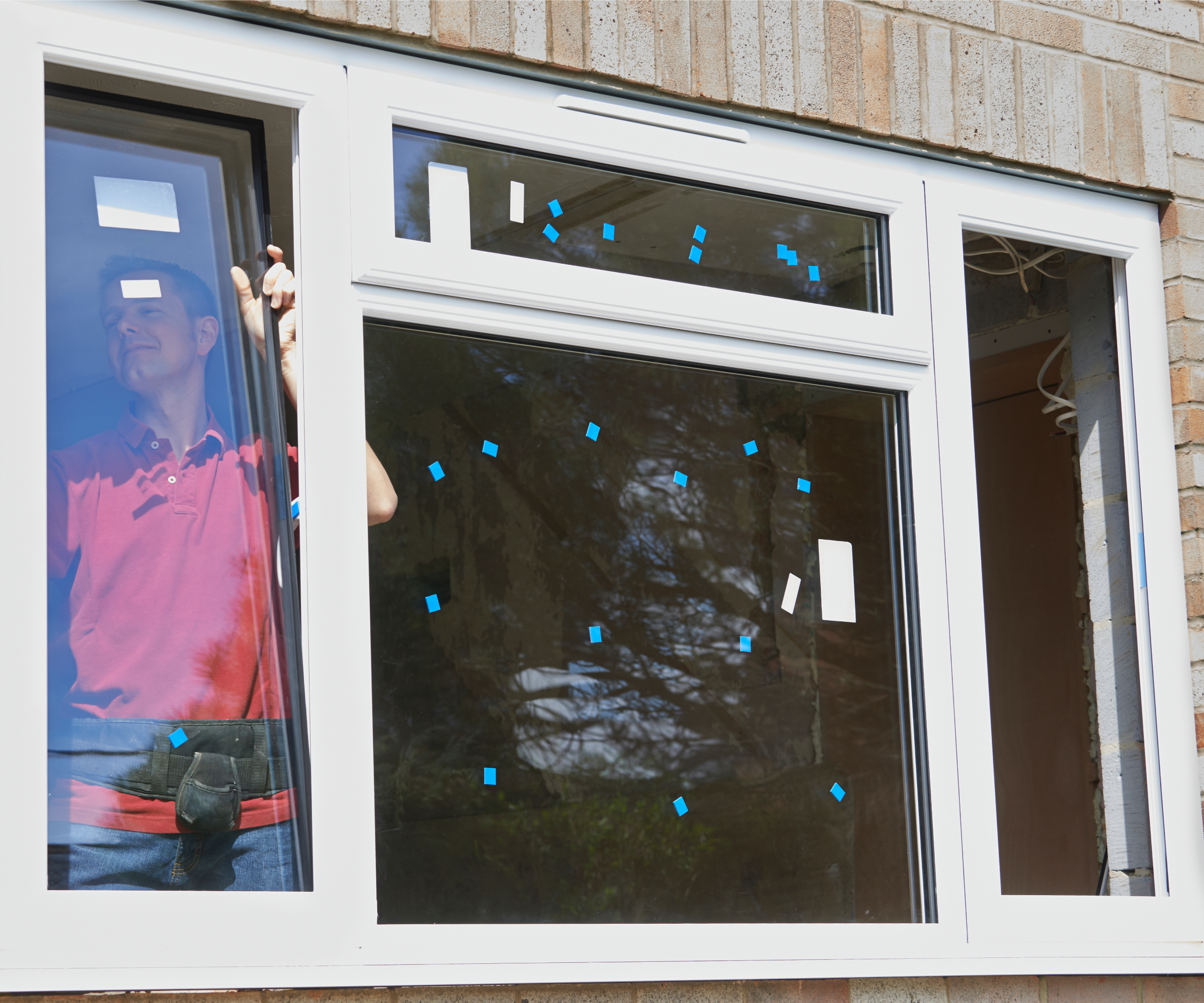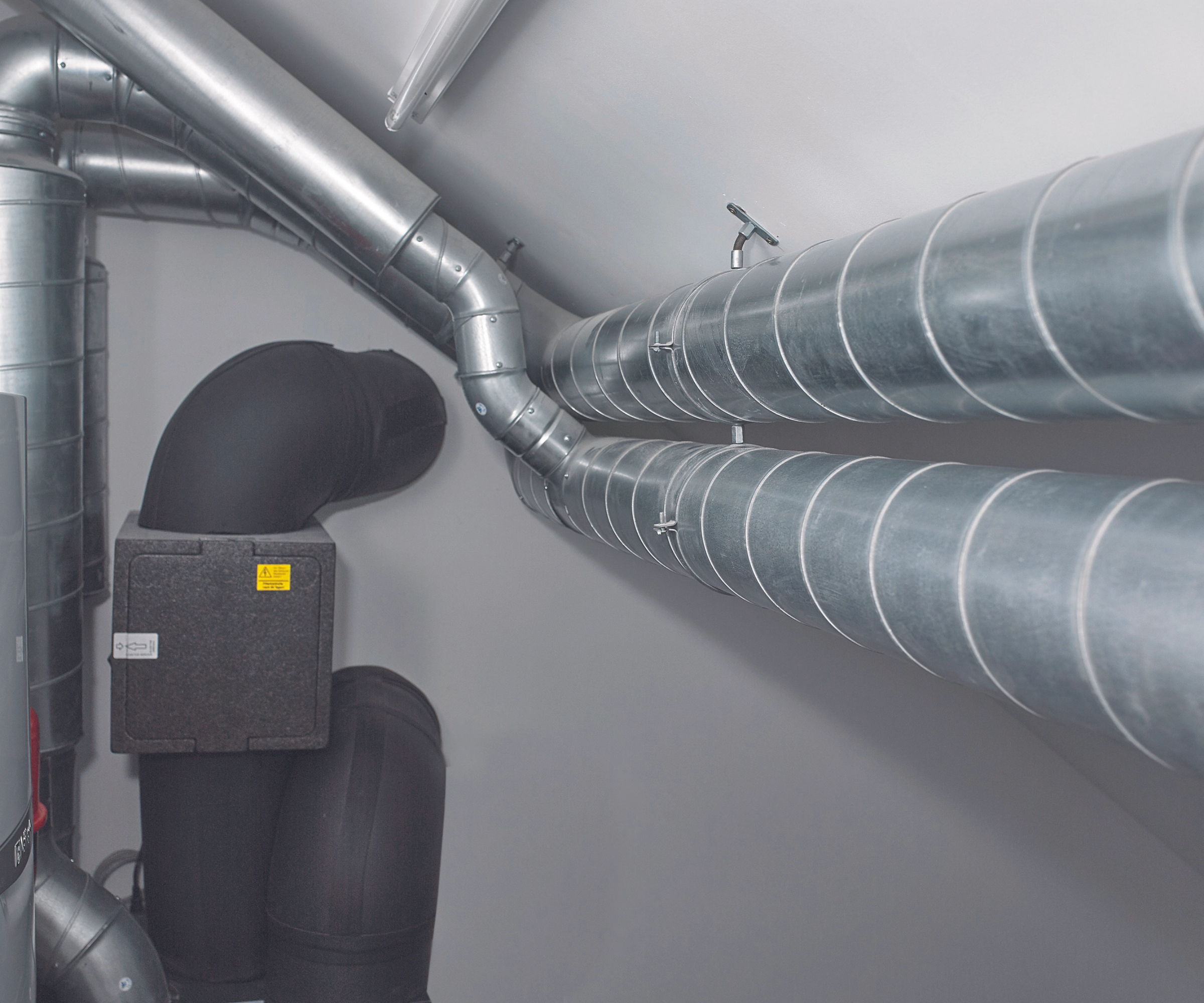Why not having trickle vents could be more serious than you think
If you've ever wondered what are trickle vents and if you really do need them, we explain why this little trickle of air has more power than you realised

Although you may know the answer to what are trickle vents, you may still wonder if that little flow of air really makes a difference to your home ventilation. Or, perhaps you feel it's a bit of an inconvenient eyesore that lets your heating flows out and an annoying draught come in.
But the reality is we do need them – albeit not in all homes – and in some cases there are potentially serious consequences if you don't have them.
So just what powers do these little strips of slatted plastic have, why doesn't every home in the UK need them and what happens if you should have them but you don't?
What are trickle vents?
In terms of their practical appearance, trickle vents are usually found at the top of your window or door frame.
“They are small openings built into window or door frames that allow a continuous flow of fresh air into a building, even when the windows are securely closed," explains Anthony Threlfall, head of marketing at Everest.
That said, while the most common version is found in the frame and has a plastic cover that can be opened or closed, there are in fact three types of trickle vents says Anthony:
- Through-frame or through-sash vents: The most common type, integrated directly into the window frame or sash
- Over-frame vents: Fitted above the window frame, often used when through-frame vents aren't possible
- Glazed-in vents: Positioned in the glazed area of the window, though this type may detract from aesthetics and is less commonly chosen


Anthony Threlfall is a windows expert at Everest, a a trusted name in the UK glazing industry, that has been at the forefront of window design. It is at the forefront of triple glazing production in the UK and is committed to supporting UK manufacturing. Everest oversees every step of the production process to develop its market-leading products and continues to champion quality and innovation.
Why do we need trickle vents?
Anyone who's ever found a mould hotspot in their home, or become frustrated with a sweating toilet will understand the importance of home ventilation.
Bring your dream home to life with expert advice, how to guides and design inspiration. Sign up for our newsletter and get two free tickets to a Homebuilding & Renovating Show near you.
We generate a lot of moisture within our homes through daily routines such as cooking, washing, drying clothes and even breathing. This causes the humidity levels inside to rise. Once this humid air reaches a cold surface, it forms water droplets which turn into condensation.
If you don't deal with this problem, over time it can lead to more serious problems with mould and damp. But, with good home ventilation which extracts the air and replaces it with clean, fresh air from outside, the risk is reduced.
However, while good extraction and measures such as house burping can allow bursts of fresh air in, they are reliant on you remembering to do so, which is where the benefits of trickle vents start to reveal themself.
“Trickle vents help improve ventilation by allowing a “trickle” of air to circulate, preventing indoor air from becoming stagnant while reducing moisture build-up from the air that can cause mould," says Anthony Threlfall.
And while it's common to associate damp and mould with older properties, "they are just as important in modern houses which are designed to be more airtight,” confirms Anthony.

Trickle vents and building regulations
Of course, as well as their ability to improve air flow around the home, there's also bigger problem if you don't have trickle vents. They are part of the building regulations standards covering ventilation, meaning if you don't have them in your home, you could be breaking the rules.
“As of 15 June 2022, Building Regulations in England and Wales mandate that trickle ventilation must be fitted on all replacement windows and doors in habitable rooms," warns Anthony Threlfall.
"This includes bedrooms, living rooms, kitchens, and bathrooms - but excludes hallways and stairwells. Scotland already had similar requirements in place prior to this."
So, while trickle vents may only be providing background ventilation, it's considered an integral part of the rules when building a house. Although, as we'll cover next, not all homes are required to have them.
Do all homes need them?
Despite their obvious value, there are some situations when trickle vents may not be needed, and those where they should be installed – but they aren't.
“Certain scenarios may make trickle vents unnecessary or undesirable. Homes with mechanical heat recovery systems or continuous extract ventilation systems, for instance, typically do not require them to meet Building Regulations.
“On top of this, listed or historic buildings may be exempt from having trickle vents to preserve the property’s aesthetic. However, other forms of background ventilation would need to be provided to meet regulations," explains Anthony Threlfall.
Other scenarios when you may not spot trickle vents in place include:
- Older window installations: Windows and doors fitted before the 2022 regulation change may not include them
- Installer oversight or miscommunication: Some installers may not inform customers about the requirement - but, this is a legal requirement and can impact the sale of your property if you do not comply

Pros and cons of having trickle vents
When it comes to the pros and cons of having trickle vents, it's important not to underestimate just how powerful these little strips are. While they may only be a small cog in the big wheel of home ventilation, the consequences of poor air flow are big.
Issues with damp and mould may only seem like surface problems, but in fact run deeper. Untreated mould can lead to heath issues in the young, elderly and those with chronic conditions or respiratory problems.
Damp can lead to structural problems with roofs, walls and floors, and even though trickle vents may be small, that regular airflow will all contribute to a healthier and safer home.
Plus, one positive to trickle vents you may not have considered is how they can help with your home security costs, says Anthony Threlfall.
"Trickle vents allow for ventilation without compromising the security of your home. Some windows do have night latches, but these are not secure – they are an open window and would potentially not be accepted by insurance companies if you left your windows on the latch and were broken into."
Are there any downsides to having trickle vents?
That said, there are always two sides to every story and some of the potential downsides of trickle vents, according to Anthony Threlfall, could be considered as:
- Noise intrusion: It's worth noting that adding trickle vents to windows can impact any noise reduction measures you have on your windows. Since they create small openings, external noise can enter more easily
- Potential draughts: If left open during cold weather, trickle vents can create draughts in the room, but as mentioned, you can close them during the colder months
- Cleaning: The vents can accumulate dirt, so it’s important to keep them clean

Using trickle vents
“Although the vent itself can also be closed, they are designed to be left open all the time for continual ventilation, ensuring a gentle, uninterrupted flow of fresh air," advises Anthony Threlfall.
"This discreet, yet effective, ventilation helps expel moisture and airborne pollutants, preserving the purity and comfort of your home," he says, all while you carry on with your life.
"However, for optimal use, consider combining trickle vents with other forms of ventilation, such as the best extractor fans for bathrooms, and making sure your kitchen ventilation system is fully comprehensive," he advises.
FAQs
Should trickle vents be closed in winter?
“While trickle vents can technically be closed, it’s advisable to keep trickle vents open in winter to prevent damp and condensation," says Anthony Threlfall. "If you do close them due to cold draughts, ensure regular ventilation by opening windows for short intervals to maintain healthy air circulation.”
Do they affect the type of window covering you can have?
“Generally, trickle vents shouldn’t interfere with most window coverings like blinds or curtains. However, bulky or close-fitting fittings may partially obstruct the airflow and reduce their effectiveness," warns Anthony Threlfall.
"For instance, as they are typically located at the top of the window frame, coverings that sit flush against, or over this area, like certain roman blinds, perfect fit blinds, or full-height shutters, might restrict airflow if not positioned carefully.”
Do trickle vent stop condensation completely?
“Trickle vents help reduce the likelihood of condensation by allowing moist air to escape and fresh air to circulate. However, in homes with excessive moisture production (for example from cooking, showers, or drying clothes indoors), additional ventilation measures may be required to fully prevent condensation," advises Anthony Threlfall.
Are there any alternatives to trickle vents?
Alternatives to trickle vents include mechanical ventilation with heat recovery systems for continuous airflow while saving energy, continuous extraction systems, particularly in kitchens and bathrooms, and ventilation fans for more targeted airflow.
"However, while these systems provide effective ventilation, they are typically more expensive and require additional installation considerations compared to trickle vents,” says Anthony Threlfall.
You may also want to consider roof vent tiles, particularly if you are undertaking a loft conversion and want to avoid loft condensation or mould in your loft.
Can you retrofit trickle vents?
“Yes, trickle vents can be retrofitted into existing window frames," says Anthony Threlfall, "but the process can be complex. It involves drilling holes into the frame, which requires precision to avoid damaging the structure.
"At Everest, we recommend installing new windows with integrated trickle vents for optimal performance and a seamless finish," he says.
Good home ventilation also means getting the ambient temperature in your home right, but if you're keen to explore more ways of ventilating your home, make sure you have the right natural ventilation in place, and discover if you can potentially retrofit MVHR into an existing home.
EDITOR’S NOTE: An earlier version of this article included a quote from a purported expert whose credentials we have not been able to verify. The quote has been removed. We regret this lapse in our verification process and have updated our internal protocols to reduce the risk of recurrence.

Sarah is Homebuilding & Renovating’s Assistant Editor and joined the team in 2024. An established homes and interiors writer, Sarah has renovated and extended a number of properties, including a listing building and renovation project that featured on Grand Designs. Although she said she would never buy a listed property again, she has recently purchased a Grade II listed apartment. As it had already been professionally renovated, she has instead set her sights on tackling some changes to improve the building’s energy efficiency, as well as adding some personal touches to the interior.
